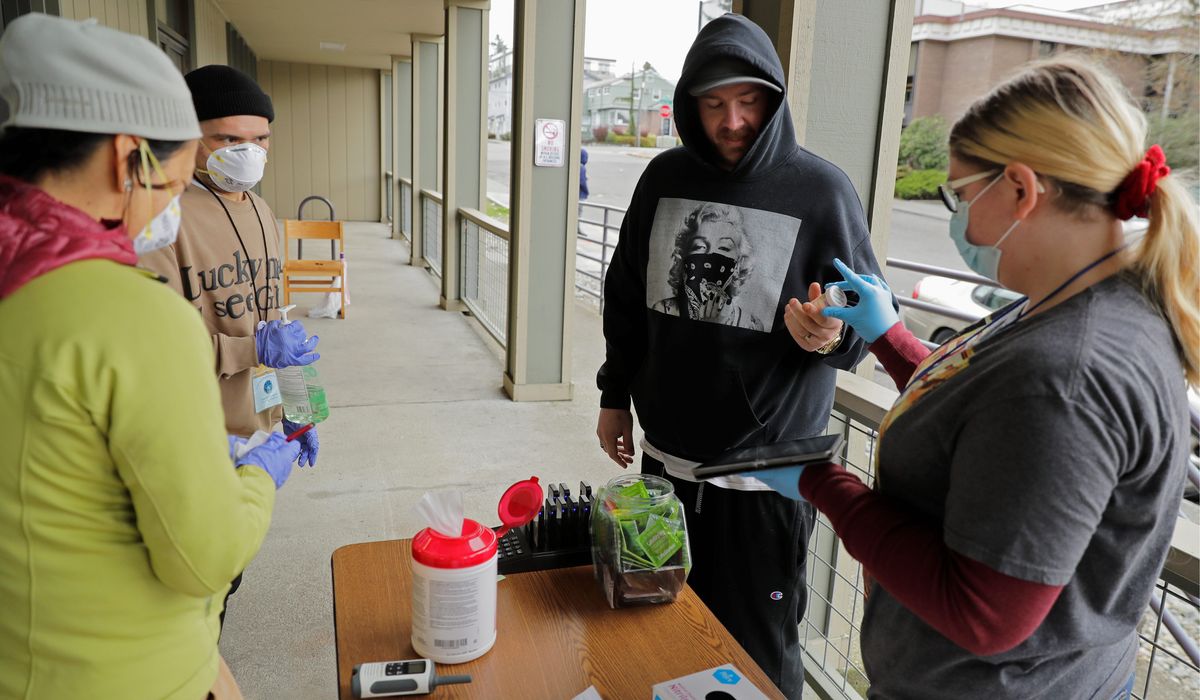The coronavirus presents additional risks and challenges to first responders trying to save lives amid the ongoing opioid epidemic. Treating an overdose victim could expose EMS staff to respiratory droplets that can transmit COVID-19.
Dr. Kim Chizmar of the Maryland Institute for Emergency Medical Services Systems said first responders are having to take additional precautions for procedures like administering naloxone or Narcan, medications that can reverse overdoses.
“Any time they are doing anything, any procedure that might generate an aerosol or droplets coming from a patient, we advise them to put on gowns, gloves, N-95 masks, eye protection,” said Dr. Chizmar, the agency’s EMS medical director.
COVID-19, he said, has focused attention on protecting first responders from aerosols. For example, EMS staff did not routinely wear N-95 masks and gowns before the pandemic, Dr. Chizmar said. Placing a breathing tube in someone, providing ventilation or pushing naloxone up the nose could all generate an aerosol.
“That’s where the N-95 layer of protection is now recommended. That wouldn’t have been the case last year before we had COVID-19,” Dr. Chizmar said.
According to recent data from the Centers for Disease Control and Prevention, overall opioid deaths declined by 2% between 2017 and 2018. More than 67,000 people died of opioid overdoses in 2018, the most recent year data are available.
Dr. Chizmar’s agency has reported a decrease in the number of naloxone doses given each week since early March, after an upward trend from late January to early March. Naloxone doses reached a high of about 200 per week in March but have dropped to about 160 per week and remained steady, he said.
However, the Virginia Department of Health has recorded an increase in total suspected opioid overdoses between February and March, from 671 to 782, according to a report provided to The Washington Times. A suspected opioid overdose is recorded if EMS personnel administer a dose of naloxone.
The report shows a 27% increase in suspected opioid overdoses between February 2019, when 526 naloxone doses were recorded, and February 2020. Between March 2019 and March 2020, the Health Department recorded a 33% increase in opioid overdoses, up from 588.
It is difficult to know the current state of the national opioid epidemic since there are no hard statistics, said Dr. Nora Volkow, director of the National Institute on Drug Abuse (NIDA).
People who use opioids at high doses medically or because of opioid use disorder could face challenges to their respiratory health, and chronic respiratory disease is known to increase risk of dying from an overdose, Dr. Volkow noted, hence the harm to lungs from COVID-19 also could similarly endanger this population.
She voiced concern that individuals with opioid use disorder cannot access treatment and medications, adding methadone clinics are closing or limiting the number of patients and expressing concern over the actual supply chain of opioid therapy medications.
Recovery groups are being “decimated” due to social distancing or moving online, she said, but not everyone has access to these virtual forums. The likelihood of someone being present to administer naloxone could be down due to physical distancing.
Dr. Volkow added she also is worried that people suffering from opioid overdoses are not being brought to emergency rooms in the first place, saying the opioid epidemic is more of a concern now due to added stress.
“Stress leads to relapse. People also start the consumption of drugs that may not have been addicted,” Dr. Volkow said. “It needs to be expected that there will be an increased consumption of drugs and many patients will relapse.”
On the other hand, she said it might be harder for drug dealers to get opioids across borders, but surveillance for these dealers is also down because of the coronavirus.
The Fire Department of the City of New York reportedly is dealing with increased emergency calls and a shortage of staff due to sick leave.
According to former FDNY Chief Richard Alles, the fire department is fielding 7,000 calls within a 24-hour period, compared to the previous 4,500 calls. He said about 25% of the 4,500 EMS personnel and 17% of the 10,000 firefighters the department has are on medical leave because of the coronavirus.
“It’s a huge problem with the opioid crisis impacting communities throughout the United States. Many of our first responders were already under stress in dealing with that,” Chief Alles said.



















